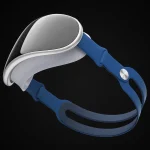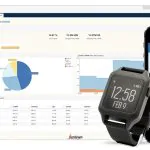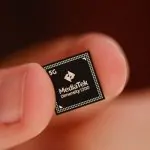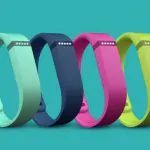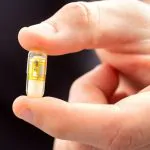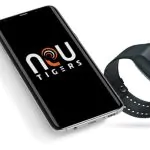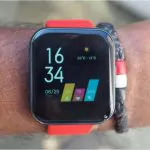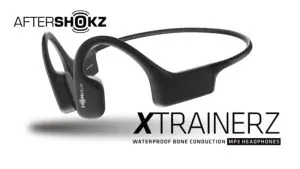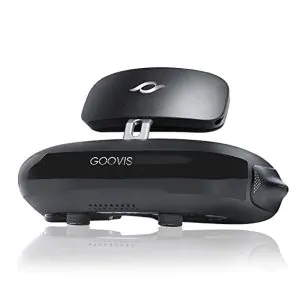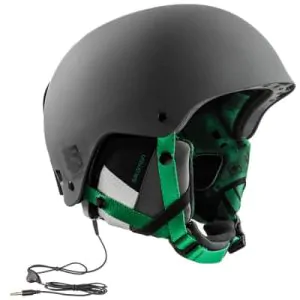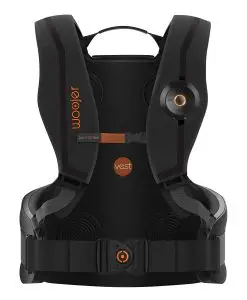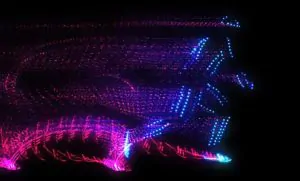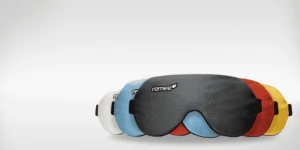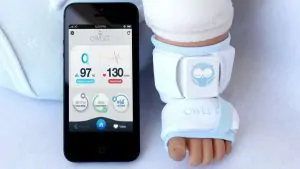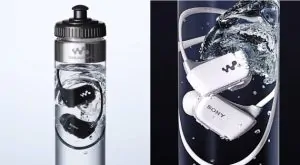Putting smarts into the band of an Apple Watch still feels like an untapped opportunity, so enter the Aura Strap, which does that to track hydration.
We first covered Aura Devices back in 2017, when it hit Kickstarter with its Aura Band, a wearable that promised to track body composition and hydration level from your wrist – although it was beset by delays lasting years.
In 2019, it decided to add the launch of the Aura Strap for the Apple Watch, taking the same features packed into its band-like device and putting it onto a watch strap.
We’ve been spending some time getting to know the Aura Strap, to find out first and foremost if it works, and whether it’s worth shelling out the price of a budget smartwatch to buy one.
How it works
Before getting into how the Strap performs, let’s get into exactly what it promises to do, and the technology that aims to deliver it.
Aura Devices uses bioimpedance analysis, a term that might be familiar if you own a set of smart scales.
It’s a method that transmits a tiny electrical current to measure the resistance of your body tissues.
Once this is paired with some basic information, like your age, gender and weight, Aura is then able to determine the composition of your body and hydration level data, giving you a breakdown of body fat, muscle mass, minerals and body water.
With the smart strap securely on your wrist, you’ll take a measurement by placing the sensor on a specific part of your hand. It uses sound to communicate the reading to the Apple Watch’s built-in microphone and then stores the reading in the dedicated Apple Watch app.
The data can be viewed in the Aura iPhone app and can be connected to Apple Health.
Along with breaking down your body composition, the strap also works as an activity tracker, tracking distance, calories burned, passive calories burned and heart rate. In doing that Aura hopes it can better align hydration level with your daily activity to help you better identify trends with your data over time.
The Aura Strap

The actual strap is very reminiscent to the kind of nylon straps that Apple makes itself. Put it up alongside something like the Nike sport loop band and the feel is very similar. It’s something of a departure from the plastic band that was originally promised with the Aura Strap.
It connects to the Apple Watch in the way that most normal bands by sliding in the lugs attached to the strap. There’s velcro straps on each end of the band that sits either side of the module that does all the magic.
That houses a nine-axis motion sensor, the electrodes are made from what Aura says is medical stainless steel that sit on the outside and have already started to look a little scratched.
It’s slightly thinner than the Apple Watch Series 5 we tested it with, and almost as tall as the smartwatch. As it sits away from the Apple Watch, it’s not adding thickness to the overall feel of the smartwatch.

Hidden inside that case is the kind of coin cell battery you’ll find inside a lot of traditional watches and that’ll give you six months worth of battery. A screwdriver is supplied in the box to prise away the small screws when you need to eventually switch it out for a new one.
There’s a single physical button that’s used to start the measurement process and also a microphone. That mic is used to communicate the data to the Apple Watch through ultrasound as opposed to something like Bluetooth.
Wearing the strap throughout the day has been okay, but we couldn’t help wishing the module was smaller and thinner.
You wouldn’t want to sleep with it on, and while it doesn’t weigh heavy, it does break up the otherwise svelte profile of the Apple Watch.
It is safe to shower with and wash your hands with it still on, though unsurprisingly jumping in the shower with a nylon band means you’ll be waiting some time for it to dry off.
Another problem we found is that on our skinny wrists, we needed the strap to wrap around a bit more tightly and the size of the module made that impossible to do.
The hydration test

The first thing to realise with the Aura Strap is that it doesn’t monitor hydration level continuously. It’s all about on the spot measurements. Those measurements can be a bit fiddly to conduct as well.
Once you’ve got the Aura Apple Watch app downloaded, you’ll have your most recent body composition data displayed and see a big measure button up top.
To take a measurement, you need to tap that button on screen, then press the physical button on the module. Then you press the start button back on the app and finally move it over to the part of your wrist best placed to take reliable measurements. That’s all while making sure your wrist is away from the body.

If that sounds like a recipe for getting that process wrong on occasions, then you’re right. We often pressed the measure and start buttons before reaching for the physical button in between. It’s too easy to do and that’s a bit of a problem with the Strap.
The reliability of getting a reading on the first attempt is problematic too. It’s definitely improved since Aura rolled out a recent update, though there’s still been times it’s failed to take a reading. It’s advised you have clean hands, but even doing all the right things you can be met with an error message every now and then.
The data

So our main interest lay with its abilities to monitor hydration, but with the promise of breaking down other elements of body composition, we also paid close attention to that too. When we took a reading on the strap, we did the same on a set of Garmin Index smart scales, which offers similar bioimpedance analysis to get a sense of how it stacked up.
Every time a successful measurement was taken on the strap we took one on the smart scales directly before or after. To test whether hydration levels adjusted we also took measurements before and after exercise. Especially as exercise can have an obvious impact on hydration levels. The body is so hugely reliant on functioning correctly with the right amount of water content and we do lose fluid through sweat when exercising.
According to the health information site HealthLine, water as percentage of someone of my age should be on average 59% and within a range of 43%–73%. In the Aura app it states a range of 45-70%.

In our early testing, the hydration readings were coming in at around 41% for hydration compared to the 69-70% body water readings we were receiving from the scales. Post-update, things seemed to settle down and recorded some data that while not identical to the scales were more in line.
It was a similar story for weight where initial measurements were well off in terms of accuracy. Elements like BMI, bone mass and body fat data were roughly the same, but never identical as the screenshots show below.

Aura Strap (left and centre) and Garmin Index smart scales (right)
With hydration though what lacked alongside the data was some action. Doing our measurements before and after runs saw a small drop in hydration percentages, but at no point in the wearing strap did we get a nudge to drink water or rehydrate as we anticipated it might do.
There’s another aspect to the way data is handled that might disappoint some. While it does offer support to push data to Apple Health, that’s reduced to lean body mass, body fat percentage and weight measurements. There’s no isolated data dedicated to hydration level.
This feels like a missing element for the Aura Strap to make it something that you’d feel compelled to wear and live a little with the slightly awkward-looking design.
The wrap-up
There’s the nucleus of a good idea with the Aura Strap. A smart strap for the Apple Watch that can help you pay closer attention to hydration level, which is something no other wearable really does beyond letting you manually counting your cups of water.
Aura doesn’t quite nail it as an idea however. At least not in its current guise. While no means a bulky setup, it does still need slimming down and the way you take measurements is a few steps too long for us.
Is the data reliable? That’s certainly another question mark. There seems to be a lot of factors required to get ‘reliable’ data. Then the other problem is what happens with that data?
What we really hoped for was something to raise the alarm when water intake was low, something that doesn’t seem possible when that bioimpedance analysis is not being continuously monitored. It might be useful for identifying trends over time, but we hoped for something more actionable across the day.
It’s a tough one to recommend right now, but I’m intrigued to see where Aura goes next with it and whether it can build on what it has come up with so far.
